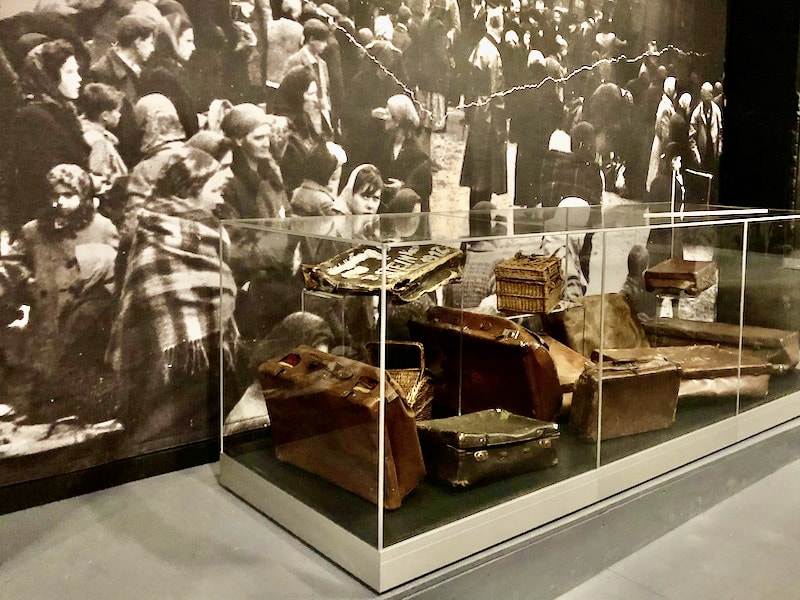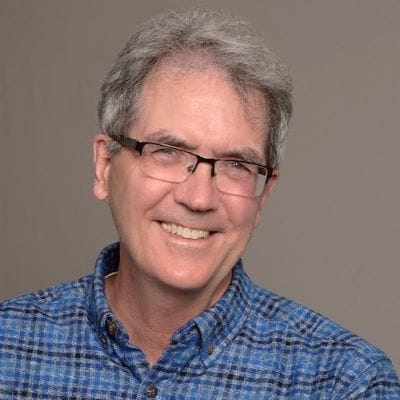‘Auschwitz,’ Union Station’s Most Ambitious Exhibition, Runs Through March.

Published June 10th, 2021 at 12:00 PM
By Kevin Collison
“Auschwitz, Not Long Ago, Not Far Away” is Union Station’s most ambitious exhibition to date and you find its title is no empty phrase before you begin the story of perhaps the cruelest episode in history.
That’s because the antisemitism that created the infamous World War II death camp where 1.1 million men, women and children were murdered, 90 percent of them Jews, remains with us today.
Union Station officials have implemented additional security measures including metal detectors, two armed guards and a strict no-bag policy as a precaution during a time when antisemitic bigotry and violence is on the rise.
While the exhibition has been shown without incident at its previous venues in Madrid and New York City, the “world is changing,” noted George Guastello, Union Station president and CEO.
“We’re not expecting problems, but we want to be safe,” he said.

Auschwitz was the most notorious Nazi death camp, an estimated 1.1 million people, more than twice the population of Kansas City, were murdered there.
What visitors will find is not only the story of how a Polish town called Oświęcim, Auschwitz in German, was transformed into the most notorious example of the Nazi “Final Solution,” but the historic context of antisemitism dating to Medieval times.
The exhibition was organized by Musealia, a Spanish firm, with the collaboration of the Auschwitz-Birkenau State Museum in Poland.
Ironically, Oświçim, a community of 10,000 people before the First World War, was an example of Christians and Jews living in relative harmony, each comprising half the population.
But by the time the sprawling Auschwitz-Birkenau death camp was liberated by Soviet troops on Jan. 27, 1945, the town’s Jewish population along with 6 million of their fellow Jews throughout Europe, had been killed.

Jews from throughout Europe were transported to Auschwitz. A model of the death camp is in the foreground.
An estimated 6.5 million Jews lived in the countries occupied by the Nazis before the war. Another 2.85 million were in the Soviet Union, which was partly conquered. Poland had the largest Jewish population, 3.25 million or 10 percent.
Visitors to the 20,000 square-foot exhibition receive headphones that describe the 700 artifacts and tell the stories over about a two-hour tour.
Two stark rooms begin your visit.
The first displays steel locomotive wheels symbolizing the vast network that transported Jews from throughout Europe to Auschwitz, the other a case displaying a woman’s stylish red shoe, worn by a victim who had no idea the fate awaiting her at ride’s end.
The second has several concrete posts from the actual camp used to string barbed and electrified wire around the camp.
The story continues with a history of antisemitism, the rise of Nazism, the establishment of Auschwitz as a detention camp to terrorize Poles in 1940 and its ultimate use as an industrialized killing machine beginning in 1942.

A lab coat worn by a Nazi doctor charged with murdering mentally disabled people is among the artifacts.
Among the artifacts are the camp commandant’s desk, an operating table used for inmate experiments and suitcases discarded by their owners after leaving the cattle cars, most to be immediately killed in the gas chambers, the others to work as slave labor.
Outside Union Station, a vintage German freight wagon, similar to those used to transport prisoners, is on display.
Throughout, one of the more remarkable records of what happened there are backdrops to the exhibit. Large blown-up photos from what’s called the “Auschwitz Album” are on display.
German photographers took the photos as an official record of the camp, not intending them to fall into outside hands. But a young Jewish woman who survived Auschwitz, Lilli Jacob, found an album in an SS barracks.
One was a photo of her family before they were killed.

A worker installing Jewish artifacts, part of the exhibition’s depiction of Jewish life before the war.
While Jews were the vast majority of their victims, the exhibition documents how others the Nazis considered subhuman including the Roma, also known as gypsies, homosexuals and mentally handicapped people were killed.
Putting “Auschwitz” together is a testimony to the good reputation Union Station has developed with European exhibitors, according to Guastello.
Several years ago, he and Jerry Baber, chief operating officer, were at a conference where they met Luis Ferreiro, director of Musealia.
“Luis pitched his concept to the team and Jerry and I looked at each other said this is something we want.
“This was more than an exhibition on Auschwitz, it truly was an exhibition on the entire Holocaust.”

Posters used by Nazis to glorify Germany are next to a uniform worn by prisoners of the regime.
The exhibition opened in Madrid and drew more than 600,000 people in one year. It then traveled to the Museum of Jewish Heritage in New York City where it received an excellent review from the New York Times.
Kansas City will be the only other North American destination before the artifacts are returned to Poland.
Guastello said the “Auschwitz’ exhibit is the most expensive ever hosted by Union Station and will need to attract about 110,000 visitors to break even. It’s already well on its way with 65,000 tickets pre-sold before its Monday opening.
Bank of America is a major sponsor and the exhibit also received significant financial help from organizations including the Hall Family Foundation, the Kauffman Foundation and the Bloch Family Foundation.

The frame of an original barrack at Auschwitz is among the artifacts on display.
Tickets have been purchased by people living in 47 states, with strong interest in Missouri, Kansas and surrounding states. Because it takes almost two hours to tour, only about 150 people can be admitted each hour or about 1,000- to 1,100 people daily.
The exhibition is currently scheduled to last through March 20, 2022. Hours are Monday through Sunday from 10 a.m. to 6 p.m.
Admission is $15 for Union Station members; $23.50 for adults; $17.50 for students, and $19 for seniors. Group admissions are $15 per person.
But before ticket holders begin coming to the exhibit this Monday, Union Station has a special event planned for Sunday.
“We’ve invited Holocaust survivors living in Kansas City and their families for a private viewing,” Guastello said, “then will open to the general public.”


